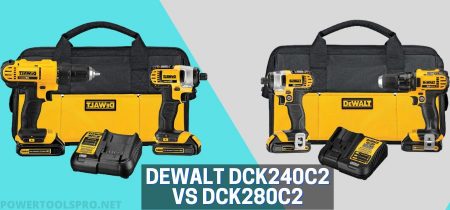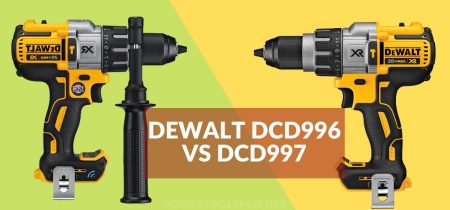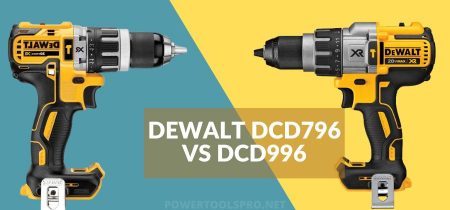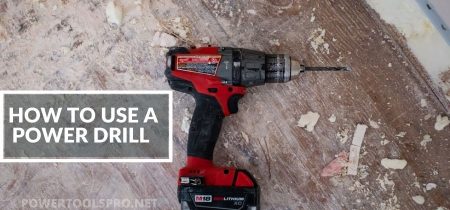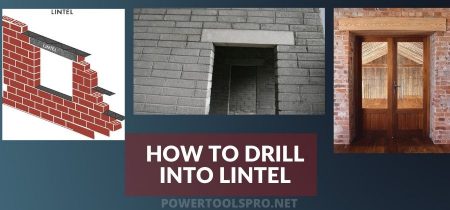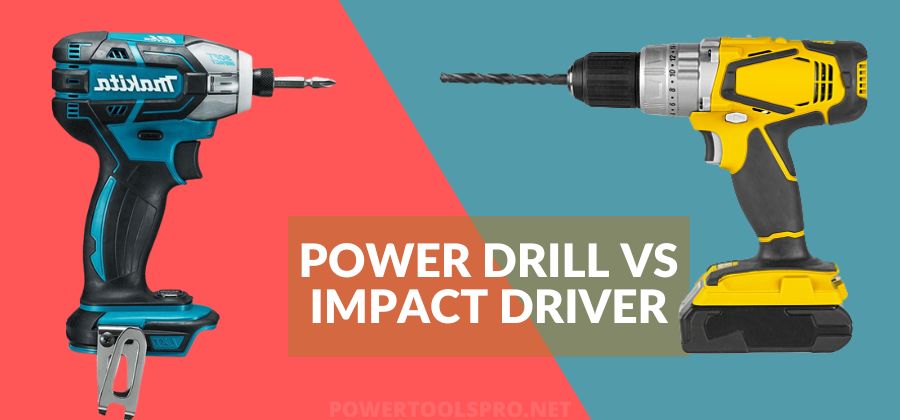
Impact drivers and drills have much in common but are not interchangeable. What’s the best option for you in terms of your needs? Here, we’ll explain the differences and help you decide which one to buy—or whether you need both a drill and an impact driver.
If you’re interested in learning more about the differences between a power drill vs impact driver, keep reading.
A drill and an impact driver around the house, shop, or garage is a good idea. To avoid confusion, it’s best to have both tools on hand for a wide range of building and maintenance tasks.
Can you use an Impact driver as a Drill?
Most people who use power tools want to know if an impact driver can also be used as a drill. It’s a good question, particularly since an impact driver works by rotating like a drill, and the two tools look a lot alike.
An impact driver can’t take the place of a drill because it doesn’t have nearly as much versatility and accuracy as a drill. But if you use a particular 14″ impact-rated drill bit in an impact driver, you can use it as a drill.
Impact drivers weren’t made to drill holes at first, as demonstrated in many ways. They can’t hold accessories as closely as a drill chuck, they can’t be used with as many accessories, and their effective impact mechanism can cause many accessories to break before they should.
A devoted drill is usually the better decision for most drilling jobs. But this means you need to have some dedicated drill with you.
If you use an impact driver all day to drive fasteners and only need to drill a few holes every now and then (for example, to keep boards from splitting at the ends), it will be much easier to carry a few extra drill bits than a whole distinctive tool, mainly if you’re working at a height.
Can you use a Power drill as an Impact driver?
There is less torque in traditional drills than in modern models. It’s important not to confuse an impact driver with a hammer drill, which uses rear strokes to assist the bit cut through rigid materials like concrete. Impact drivers use both high torque and a fast rotational strike.
In order to keep the screw tip from spinning out of the fastener’s grooves, the rotational hits aid in nudging fasteners forward. It’s easier to visualize this as a wrench on a bolt, with a hammer bumping it to give it greater torque as the bolt is twisted.
In terms of functionality, there is little similarity between an impact driver and a power drill. It is possible to use a power drill instead of an impact driver, but you should know that the results may not be what you were hoping for.
Therefore, it is highly recommended that the two power tools be used in a manner that differs from one another.
Power Drill Vs Impact Driver
Size
Trying to describe the features of each instrument was met with groans and a lot of scratching of heads. Although the machines appear to be similar, they are considered distinct.
What sets these two power tools apart is their physical dimensions, precisely the distance from the tool retention end to the case back.
Drill Size – 220mm
Impact Driver – 120 mm in diameter.
Because of the internal workings, impact drivers can be manufactured with a concise body, allowing them to fit into tight locations and reducing their weight significantly.
The impact driver’s small size and light weight make it ideal for working in tight spaces, such as between joists, inside cupboards, or above ceilings.
Power (Torque)
Is it rare or abnormal for power tool consumers to make buying judgments solely on a tool’s specifications sheet? Undoubtedly the quickest RPM and an enormous torque number must mean it’s the best, right? I’m not quite there.
In spite of their small size, impact drivers have a lot of torque and may turn fast in a burst. This is especially true when compared to other types of tiny engines.
Torque figures on specifications sheets, however, can be ambiguous depending on the method used for measuring torque. Two types of torque, hard and gentle, can be used as examples.
Soft Torque:
The best way to think of soft torque is to envision driving a woodscrew into a block of wood. As the screw is pushed further into the material, a growing amount of torque is required. This is known as soft torque.
Hard Torque:
A bolt with a threaded end can be driven into a pre-tapped steel plate with very little resistance after the threads are engaged; the bolt moves effortlessly through the threads.
Because there is no base material to absorb any stress, a ‘wack’ can be heard when the bottom of the bolt head finally contacts the steel plate. A sudden surge in torque results in an extremely high reading, which is what is known as “hard torque.”
Unlike hand tools, drills can maintain their torque level throughout the turning process. While an impact driver with considerably greater torque specifications has long given up, many people are amazed to see a powerful drilling machine continuing to drive in a massive construction screw. This is made feasible by the constant turning power.
Mechanism
An electric motor inside the drill bit provides the torque, the rotating force required to drive the drill bit. Its operation is based on the magnet poles repelling each other.
If you’ve ever played with wall magnets, you’ve probably noticed that putting two north poles or two south poles of two different magnets together makes them resist each other.
This causes an electric motor to generate torque, which is then used to drive a drill bit.
A permanent magnet encases a metal rotor mechanism in a motor. An electrical wire is looped around a metal rotor. The rotor transforms into an electromagnet when current is applied to it.
Torque is generated that drives the rotation of the rotor due to the attraction between the like poles of the two magnets. The rotor has a switch mechanism, defined as a commutator, that maintains the rotor rotating by reversing the direction of the current supplied.
A revolving axle provides the gear mechanism with the torque needed to drive the drill bit. As a result, the electric power supplied generates a magnetic field and spins the rotor to create the torque.
The speed and direction of the drill bit’s rotation can be regulated by adjusting the power supply and the direction of the electric field.
In spite of their seemingly miraculous potency, impact drivers are based on relatively simple principles. As with a drill, the internals features a motor that generates rotating force. The only difference is that the hammer and anvil are crammed into a smaller space.
Impact drives are a unique tool since they rely on something else entirely. Using a hammer, spring, and anvil, an impact driver may generate rotating impact force when you want more torque.
When the motor turns the shaft, the spring compresses and then releases, slamming the hammer on the anvil in a circular motion. A short period elapses between these two events. A typical impact driver will strike more than 50 times per second.
Typically, drills can’t provide the same amount of force as a same-sized instrument.
Noise
Suppose you’ve ever heard an impact driver or drill in use. In that case, you’ll immediately be able to distinguish the loud pounding action of the impact driver in comparison to the drill’s more subtle rotational motion.
Ask any impact driver user or anyone working in an area where they are utilized, and I’m sure you’ll hear about their roaring decibel output. I’ve even heard some people refer to impact drivers as “rattlers” because of the sound they create.
Noise is an inevitable byproduct of the impact driver’s design, which involves continuously striking a metal anvil with spinning hammers.
A combination of engine and gearbox noise can be heard, although the noise levels are much lower than before.
Drills are far quieter than impact drivers, although ear protection should always be used when drilling or driving in any situation. The exception is using a combi drill for impact or percussion drilling in masonry.
Conclusion
Drills and impact drivers are two unique power tools with potential uses. In contrast to the drill, primarily used for producing holes, the impact driver is generally employed for screw installation. Another distinction between a drill and an impact driver is that the torque of the latter is automatically adjusted.
Therefore, before purchasing any equipment, you should confirm that your requirements have been stated. After that, it will be simple to choose your course of action.
